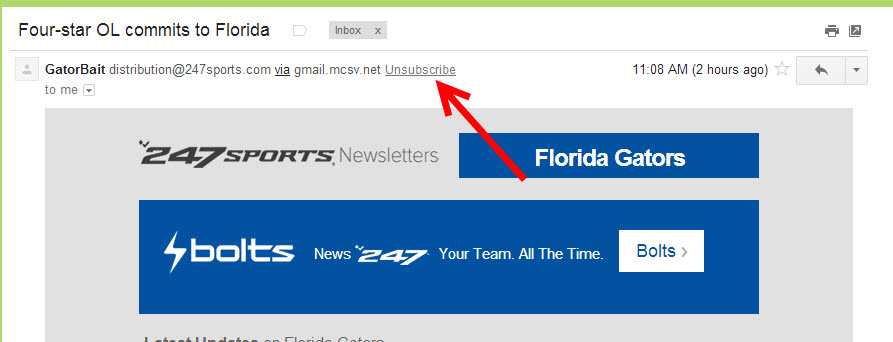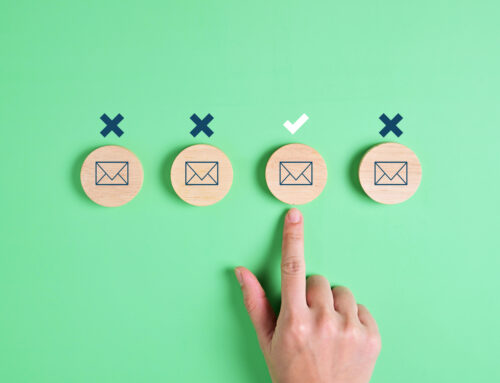I read last week that Gmail would be moving an unsubscribe button to the top of its email messages making it easier for people to opt out of unwanted messages.
I just noticed it in action today when I checked my personal Gmail account and saw this:

Now, I may be a huge college football/SEC fan, but I root for the Auburn Tigers. Not the Florida Gators. And while some of my fellow fans do follow every bit of news from across the conference, I don’t really care to read about Gator news – especially since we probably won’t play them this year. I also don’t ever remember interacting with 247 Sports, but it’s possible I did at one point so I did not want to mark them as Spam. I just don’t want to receive anything else from them.
So instead of searching for the “unsubscribe” button which is usually at the bottom of an email, I was able to quickly get off of this mailing list.
Bam. Done.
Good for me.
Good for GatorBait.
I just don’t see this move by Gmail as a “Huge Blow” to email marketers like ADWEEK claims.
Why Are Unsubscribes Ever a Good Thing?
First off, if you are putting out crappy communications that no one cares about, then unsubscribes are not a good thing. I am also in no way suggesting that people unsubscribing in mass droves is a good thing either. In that case unsubcribers are probably a reflection of how you communicate. (But that is a whole other blog post…)
Now, I am sure Florida Gator fans are excited they got a four-star offensive lineman to commit.
That email wasn’t necessarily bad content.
It just wasn’t for me.
If you have an ear to what your supporters want and give it to them consistently, trying to adopt the 6 R’s of Messaging Relevance along the way, and you still get unsubscribes? It’s OK!
The phrase “quality over quantity” totally applies to an email list.
We have gotten far too caught up in the number games. How many Facebook Likes does my page have? How many Twitter followers can I get?
I get it. Measuring the number of people on a list is a very easy thing to do. You don’t have to do any math to figure it out. And it absolutely gives you an idea of how well you are attracting others.
I’m not saying stop paying attention to those numbers. We still track all of those numbers here every month.
But that metric does not telling a complete story. What does having 20,000 people on your email list mean if none of them really care about what you do?
If someone leaves your list, or stops following you, or whatever, then you probably weren’t a good fit for any number of reasons.
It’s not the end of the world.
You will not please everyone. Some will think you send too many emails. Some will think you didn’t send enough. Others will resent you asking them for money or to volunteer. Others will resent you for never asking them to do anything. It’s just the way it goes.
To sum up – Yes, still track those numbers. Set up benchmarks and note any major changes in the numbers from month to month. Root for Auburn over Florida.
But stop freaking out if you get an unsubscribe.





